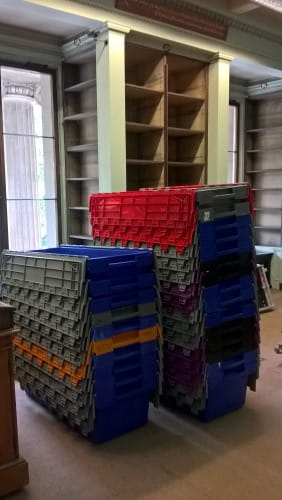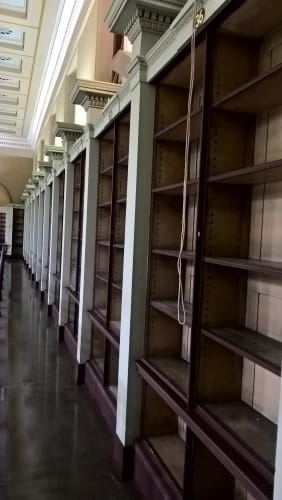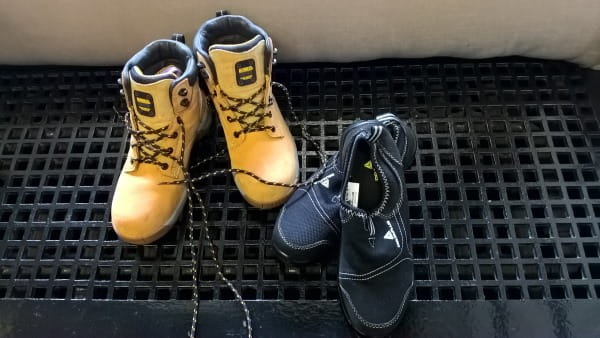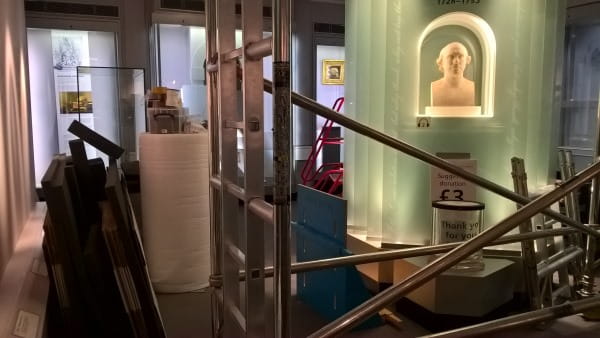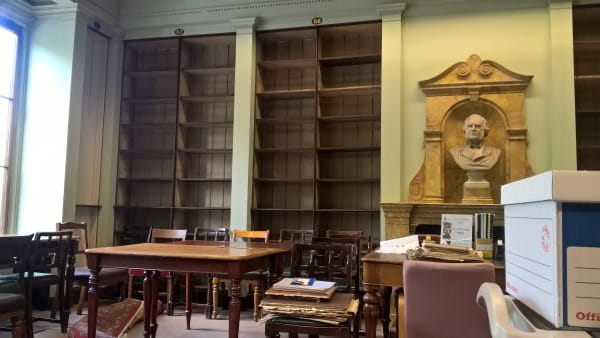Collections on the move: Moving two hundred years of history
21 Aug 2017
Susan Isaac
With over 57,000 museum objects, approximately 110,000 books and journals plus 3086 boxes of archives, it is a massive project to pack the RCS collections. Every item must be checked, carefully packed and added to an inventory before it is moved. So, how have we got from shelves and display cases that were full to the almost empty ones we are now surrounded by?
Staff have been planning the collection moves for more than two years. One of the results has been a very strange shopping list of items over the last year. Here is a sample of what you need to pack the contents of a museum, library and archive in numbers:
What did we use these things for?

A large amount of plywood has been ordered to build over 200 crates to house large and fragile museum specimens safely. This where the screws and the paint were used. We’ve custom made crates out of Correx (a special corrugated plastic) for other specimens. These are further padded with Plastazote foam (chemically inert material) and sometimes with scrunched up acid free tissue paper for added protection. Fragile books and journals are put into ‘phase boxes’ which are made to measure acid free card boxes that provide extra protection. More acid free tissue paper has been used to wrap individual books where the binding was damaged or brittle – requiring meters of acid free tape to secure the paper. Archives have been re-boxed so nothing will be damaged when the boxes are moved. Any box that isn’t in excellent condition has been replaced.
Many of the crates are heavy and some objects are an awkward shape as well. Staff needed steel toe capped boots to mitigate against the risk of accidentally dropping heavy items. We also purchased three scissor lifts, a number of height-adjustable tables, masks and gloves as well as other PPE (personal protection equipment) to ensure staff worked safely.
The RCS has a large collection of portraits and drawings and ‘S’ hooks are perfect for hanging them in the new storage area. We brought them from a chandler’s shop.
The walkie-talkies have been a real boon. With staff scattered amongst the different stores and rooms it was difficult to contact individuals. We have fourteen handsets divided into three sets so each team could easily contact each other quickly. This has saved a lot of time and climbing of stairs.
We are on target to meet the project completion dates when all the collections will have been moved to their temporary locations. Keep following our story by looking out the tag #Collections on the move.
Susan Isaac, Information Services Manager

